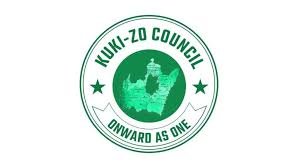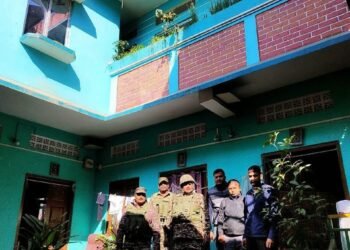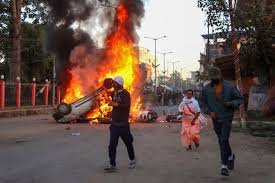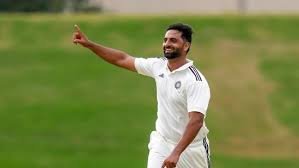At a time when decisive communication was expected, the Kuki-Zo Council’s absence from key discussions has only amplified confusion. Observers say the council’s failure to respond or guide the community has created a widening leadership vacuum.
BY Navin Upadhyay
November 17, 2025: At a Kuki Zo leaders’ consultative meeting at Tuibong on March 7, 2025, elected representatives, civil society bodies, and tribal leaders unanimously endorsed the Kuki-Zo Council (KZC) as the apex authority representing all Kuki-Zo civil society organisations.
The mandate was clear: the KZC would steer the community’s political and administrative future, champion the demand for separate administration under Article 239A, and act as the singular voice issuing statements, clarifications, and directives.
Local bodies such as ITLF, COTU, Kuki Inpi Manipur etc., were expected to speak only on local issues. Everything else—the political roadmap, community directives, crisis communication—was entrusted solely to the KZC.
But nine months later, that promise has unraveled.
The KZC is now widely perceived as ineffective and inconsistent, as its persistent silence has only deepened public confusion instead of providing the much-needed clarity.
READ: BJP Courting Two Kuki-Zo MLAs To Join Govt
READ: Tribunal Sentences Sheikh Hasina to Death for Crimes Against “Humanity”
The Guwahati Conclave Fiasco: A 24-Hour Silence
On November 16, the Imphal-based Sangai Express published an explosive report claiming that Kuki-Zo MLAs had decided to join the formation of an “elected government” in Manipur.
The story was linked directly to the two-day Kuki-Zo conclave held in Guwahati on November 15–16—an event organised by the KZC itself. The report repeatedly cited “KZC inputs” and portrayed the Council as having taken part in the discussions on MLAs entering a popular ministry.
The news triggered widespread confusion and unrest across the Kuki-Zo population. Many saw it as a betrayal of the long-standing demand for separate administration, and social media erupted with speculation.
Yet for more than 24 hours, the KZC—the organizer of the conclave and the body empowered to speak on community matters—said nothing.
Only two MLAs, and later the Kuki National Organisation (KNO) and United People’s Front (UPF), issued clarifications refuting the report. The KZC’s continued silence allowed rumours to snowball and trust in the apex body to erode further.
Why did an organisation specifically entrusted with centralised communication fail to issue even a denial? The silence reinforced a growing perception:
The KZC no longer speaks when its voice matters most.
A Pattern of Absence: The Khanpi Killings and a Deafening Silence
This was not the first time the Council failed to rise to the moment.
On November 4, four teenage Kuki-Zo boys were killed during a counter-insurgency operation in Khanpi village, Henglep subdivision. The killings sparked outrage across the hills.
Major bodies—including Kuki Inpi Manipur (KIM), Kuki Organisation for Human Rights (KOHUR), Kuki Students’ Organisation (KSO), and Kuki Women’s Union (KWU)—issued sharp, detailed condemnations, calling the incident a “state-sponsored atrocity” and a “cold-blooded execution.”
But the Kuki-Zo Council—the apex body with the highest authority—remained mute.
The Kuki-Zo Council could have constituted its own panel to investigate the encounter, especially amid widespread allegations that the boys were killed in their sleep. It could also have demanded the post-mortem report to confirm or refute claims that the youths were shot at close range. But the council did neither. It failed to mourn its own people and chose not to question the veracity of the encounter.
Its silence shocked many in the community and invited uncomfortable questions:
Why would the top representative organisation fail to condemn the killing of its own children?
Fear, Pressure, and the Price of Neutrality
Observers suggest that the KZC’s reluctance stems from:
Ongoing negotiations with the Centre, prompting the leadership to avoid statements that might be viewed unfavourably.
A desire to maintain neutrality amid rising factionalism.
A climate of intimidation in the hill districts, with security agencies remaining active.
“There is fear,” said a former student leader working with a CSO coalition.
“A strong statement invites scrutiny or retaliation. But silence weakens our moral centre—it tells people that fear has replaced conviction.”
The Modi Visit and the Symbolic Insult
The Council also faced criticism during Prime Minister Narendra Modi’s visit to Churachandpur, when security forces removed symbolic coffins of martyrs from the Wall of Remembrance.
Many expected the KZC to issue a strong, public condemnation or at least reaffirm the community’s trauma. But once again, it chose silence—fueling frustration and amplifying perceptions of weakness.
A Body That Announces Protests—and Withdraws Them Overnight
On more than once occasion, the KZC announced protest programmes only to withdraw them the moment the Ministry of Home Affairs intervened.
This pattern has damaged its credibility and conveyed an impression of an organisation that yields too easily to pressure.
Apex in Name, Ineffective in Practice
Against this backdrop, the KZC’s silence on the MLA controversy feels like yet another example of its inability to fulfil its mandate.
Created to be the single, authoritative voice of the Kuki-Zo people, the Council today stands accused of:
Poor crisis communication
Fear-driven silence
Failure to correct misinformation
Inability to defend community interests
Lack of transparency in decision-making
The result is a widening gap between the KZC and the community it claims to represent.
As one analyst put it, “In times of crisis, silence is not neutrality. It is abandonment.”













